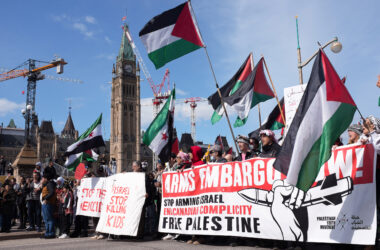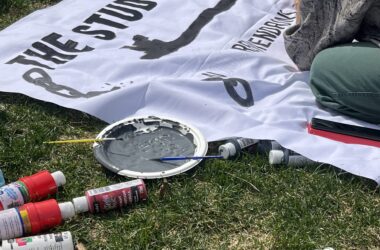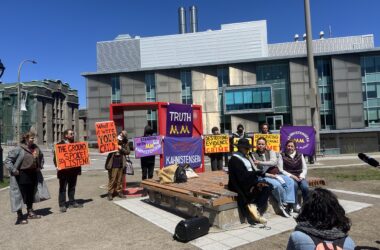The International Relations Students’ Association of McGill (IRSAM) held its second annual International Relations Simulation (IRSim) Model United Nations conference last weekend.
In contrast to IRSAM’s larger conferences, which host delegates from high schools or other universities, IRSim is the only annual Model United Nations conference at McGill that is both run and attended by McGill students.
“We started IRSim last year to give McGill students an opportunity to be delegates at McGill, and not have to [travel to other conferences at schools like Columbia],” Michael Tong, president of IRSAM, said.
Close to 90 students attended the conference in order to familiarize themselves with university level Model UN, a change for most from the high school style conferences.
Conference committees included both traditional governing bodies, such as the UN Security Council, and crisis-based task forces like a joint USA-Iran cabinet committee.
Keagan Tafler, IRSAM’s Vice-President of Delegation Affairs, highlighted the importance of exposing students, especially first years, to crisis-style simulations.
“Model UN at the high-school level is traditionally UN style, [where delegates represent countries],” Tafler said. “A lot of university conferences are crisis-based conferences, where there’s one issue, and delegates represent characters rather than countries.”
In crisis-based committees, there is no set outcome of events. Conference organizers change the scenario in the committee in response to how negotiations between the two groups proceed.
“They deal with the problems as they’re presented to them,” Tafler explained.
Participants prepare not by learning about a specific event, but rather by learning more about their character and their political or ideological positions. In the USA-Iran Joint Committee, for example, participants represented high-ranking government officials from one of the two countries. They had to deal with crises like kidnapping of government officials, cyber attacks on nuclear facilities, and disturbed uranium stores following an earthquake. The unfolding of events could just as easily have transpired on an episode of 24.
Tafler and Tong also emphasized the diverse group of student attendees.
“The beauty of IRSim is it’s not just the ‘Model UN Club,'” Tong, who is in the faculty of science, said. “I’ve processed applications [across a broad range of faculties],” Tafler added.
Nicholas Ellery, U0 arts, participated in this year’s IRSim. He took part in Model UN while in high school and appreciated the opportunity to learn the differences between that and university level Model UN.
“[IRSim] relates much more to the other university conferences, which if I were to participate in as a delegate I’d need to be more accustomed to,” Ellery said. “It serves a good purpose in that sense.”
Ellery also appreciated being able to learn from older participants, something he didn’t have the opportunity to do while in high school.
“It’s really different for me because I started in [Grade 12]. I’m used to being the most experienced in terms of age and [this was quite a different experience].”







